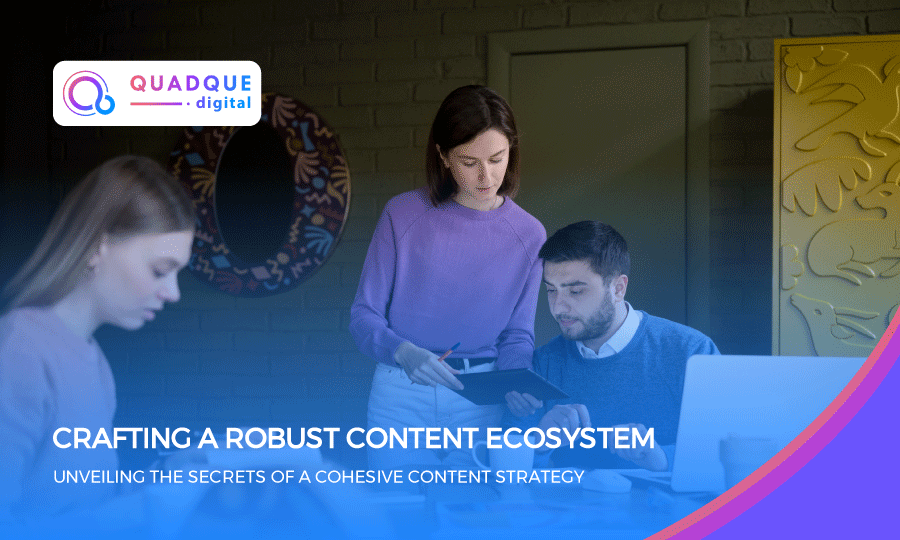Mastering Content Strategy: Building a Cohesive Ecosystem
Introduction
In the dynamic landscape of vocational training and education in Australia, the ability to effectively communicate and engage with your audience is paramount. Drawing from years of experience in this ever-evolving field, I understand that a cohesive content strategy is the backbone of success. In this article, we’ll embark on a journey to uncover the art of building a content ecosystem, where every piece harmonizes to create a powerful narrative. We’ll explore practical steps, real-life examples, and the essence of content strategy, all with the aim of resonating with our Australian audience.
The Essence of a Content Ecosystem
Imagine your content as a lush, interconnected forest where each tree represents a piece of your message, and the animals moving through it symbolize your audience. A content ecosystem, much like a thriving forest, thrives on harmony and synergy. It’s not a random collection of content pieces; it’s a deliberate strategy designed to engage, educate, and empower your audience.
Example: Suppose you’re a vocational training provider specializing in IT courses. Your content ecosystem might include blog posts about industry trends, video tutorials on coding, social media updates about student success stories, and webinars on emerging technologies. Each piece complements the others to create a rich, informative environment for your audience.
Key Takeaway: A content ecosystem is a deliberate strategy that ensures your content works together to deliver a powerful message.
Mapping Your Content Ecosystem
Building a content ecosystem begins with meticulous planning and mapping. It’s like charting a course on a treasure map; each mark and symbol represents a piece of content strategically placed to guide your audience to the treasure of knowledge and engagement. Here’s how you can start mapping your content ecosystem:
Step 1: Define Your Goals: Begin by identifying your overarching content goals. Do you aim to increase brand awareness, drive lead generation, or educate your audience? Your goals will guide your content strategy.
Step 2: Know Your Audience: Understand the preferences, needs, and pain points of your Australian audience. This knowledge will help you create content that resonates with them.
Step 3: Content Types: Determine the types of content that will best convey your message. Consider blog posts, videos, podcasts, webinars, infographics, and social media updates, among others.
Step 4: Content Calendar: Create a content calendar that outlines when and where each piece of content will be published. This ensures a consistent and cohesive content flow.
Example: Let’s say your goal is to attract more students to your vocational courses. You might create a content ecosystem that includes a series of blog posts on “The Future of Work in Australia,” accompanied by video interviews with successful alumni and a live webinar on “Career Opportunities in IT.”
Key Takeaway: Mapping your content ecosystem involves setting goals, understanding your audience, selecting content types, and creating a strategic calendar.
Content Strategy Templates
To make the process of building a content ecosystem more manageable, you can use content strategy templates. These templates provide a structured framework for planning and executing your content strategy. Here’s a brief overview of the key components of a content strategy template:
Content Goals: Define specific, measurable, and time-bound goals for your content.
Audience Persona: Create detailed profiles of your target audience, including their demographics, interests, and pain points.
Content Types: Specify the types of content you’ll produce, such as blog posts, videos, or infographics.
Content Calendar: Map out when each piece of content will be created and published.
Distribution Channels: Identify the platforms and channels where you’ll share your content, such as your website, social media, email newsletters, and more.
Key Metrics: Determine the key performance indicators (KPIs) you’ll use to measure the success of your content strategy.
Example: Many digital marketing tools offer free content strategy templates that you can customize to align with your vocational training institute’s goals and objectives.
Key Takeaway: Content strategy templates provide a structured framework for planning and executing your content ecosystem effectively.
Real-Life Content Strategy Examples
To understand the power of a cohesive content strategy, let’s explore some real-life examples from various industries:
- HubSpot’s Inbound Marketing Strategy: HubSpot’s content ecosystem includes blog posts, webinars, ebooks, and email campaigns, all aimed at educating and nurturing leads in the digital marketing space.
- Red Bull’s Content Machine: Red Bull’s content strategy is a masterclass in creating engaging content that aligns with its brand. They produce extreme sports content, music festivals, and more, all centered around the idea of “giving wings to people.”
- TED Talks: TED’s content ecosystem revolves around inspiring talks from thought leaders worldwide. They leverage videos, podcasts, and written content to share ideas that matter.
- Nike’s Inspirational Stories: Nike’s content strategy combines athlete profiles, motivational videos, and interactive fitness apps to engage and inspire their audience.
Key Takeaway: These examples showcase how a well-planned content ecosystem can elevate brand awareness and engagement, regardless of the industry.
Conclusion
In the world of vocational training and education, effective communication through a cohesive content strategy is a game-changer. Building a content ecosystem is akin to composing a symphony where every note, every instrument, contributes to a harmonious masterpiece. In this article, we’ve explored the essence of a content ecosystem, the importance of mapping it meticulously, the utility of content strategy templates, and real-life examples that inspire.
A content ecosystem is not a static entity; it’s a dynamic force that evolves with your audience’s needs and the changing digital landscape. By mastering the art of crafting a cohesive content strategy, you can create an environment where your content resonates with your Australian audience, educates, and empowers them on their vocational journey. It’s not just about content; it’s about building lasting connections and guiding your audience toward success.


Comments are closed